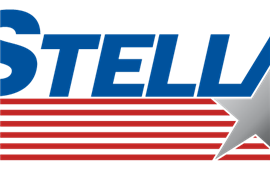Read this article in 中文 Français Deutsch Italiano Português Español
Wärtsilä introduces modular FuTube system for marine shaft lines
12 April 2024
 (Photo: Adobe Stock)
(Photo: Adobe Stock)
With headquarters in the Finnish capital of Helsinki, Wärtsilä can trace its origins back to 1834 – the company will celebrate its 190th anniversary this year. But it was in 1935 that it took control of the Crichton-Vulcan shipyard in Turku, a move which set the company on a course that would see it become a major engine and driveline supplier to the global maritime industry.
As a supplier to many of the largest ships ever constructed, Wärtsilä has a series of noteworthy achievements: weighing in at 2,300 tonnes, the crankshaft for the Wärtsilä-Sulzer RTA96-C reciprocating engine is listed as the largest ever made. In 2004, the same 12-cylinder engine (which produces 93,360 horsepower at 102 rpm) became the most powerful to use common rail injection technology.
Clearly, Wärtsilä is a specialist in developing and producing big engines and big components. But while record-breaking launches make headlines, the company has considerable expertise in refining existing technologies to help improve reliability in operation, reduce fuel consumption and cut engine emissions.
The Wärtsilä location in O Porriño, a small town located near the port of Vigo and just north of the Spanish border with Portugal, is home to one of the company’s Shaft Line Solutions (SLS) sites. At a recent press event, company executives revealed details behind a series of new products which make up a modular system intended to improve the overall performance of drivetrains in maritime applications.
 SLS Experience at the Wärtsilä plant in O Porrino, Spain (Photo: Wärtsilä)
SLS Experience at the Wärtsilä plant in O Porrino, Spain (Photo: Wärtsilä)
Grouped together under the FuTube name, the new modules include: EvoTube, a new stern tube; IntelliSafe, a self-monitoring stern tube bearing; Airguard seal, an upgraded version of the existing shaft line range; and the Shaft Line Monitoring system, which delivers insight into the condition and performance of the shaft line.
Product roundup
The SLS Experience at the O Porriño plant started with a preview of the EvoTube, an improved version of the system intended to hold and maintain the position of the shaft line. Key features of the new stern tube design include a significantly reduced overall length, largely achieved by replacing the forward tube bearing with an inboard intermediate line shaft bearing.
The EvoTube can use either oil or sea water as a lubricant. Versions set up to use oil use up to 90% less than other designs, which in turn supports a simplified oil management program. Where sea water is used, the material is resistant to corrosion and eliminates the need for any additional coating. In addition, the system supports in-water (as opposed to dry dock) servicing, which extends to replacement of the aft bearing.
The compact design supports a shorter overall shaft line, which in turn supports ease of maintenance and makes more cargo space available.
Turning to look at the IntelliSafe system, it is described as ‘a self-regulating bearing that optimises performance and operating conditions’. But within that explanation there are a series of upgrades over standard bearings which support that optimisation.
For example, the bearing is more robust so as to reduce the risk of damage. It is self-regulating, in that the system will always have sufficient lubricating oil. The bearing further eliminates metal-on-metal contact, which helps to extend the operational lifetime. And all of these points come together to help reduce the risk of damage and reduce operating costs.
To support these functions, the IntelliSafe bearings have a series of incorporated sensors to detect when operation falls outside predetermined parameters. Should heat start to build in the system, temperature sensors in the unit can trigger a cooling function. There are also proximity sensors which deliver alerts for a range of issues, including oil film thickness within the bearing.
 Jose Antonio Vazquez presents the updated IntelliSafe module (Photo: Wärtsilä)
Jose Antonio Vazquez presents the updated IntelliSafe module (Photo: Wärtsilä)
Behind that functionality, the IntelliSafe system has a comprehensive system of ports and channels designed to both add and remove lubricant from the unit; the ‘intelligent’ system can also direct oil to the areas which are most in need of additional cooling.
“EvoTube is related to the structure and layout of the vessel, while IntelliSafe is intended to address shaft line issues we see almost every week,” explained Jose Antonio Vazquez, general manager, Technical Office.
Sealing and monitoring
Like the IntelliSafe bearing system, the Airguard seal is a newly-upgraded version of an existing product. Located at the rear of the IntelliSafe bearing, the seal is designed to maintain a watertight barrier between the hull and propeller, at the same time housing the rotating shaft line.
In operation, compressed air enters into a seal ring at a higher pressure than the outside water; this pressure imbalance forces air out past the seal, at the same time preventing water from leaking into the ship. The seal also incorporates seal rings which carry oil for lubrication, with any excess collected and directed to an inboard storage tank.
The upgrades made to this latest version of the Airguard seal have prompted Wärtsilä to double the anticipated service period from five to 10 years. With no need to replace the seal rings over this period or carry out any other maintenance, the Airguard could deliver operational cost savings of up to 59% over conventional seals.
Bearing production
 Beatriz Garcia, Bearing Centre manager, explains the laser deposition process (Photo: Wärtsilä)
Beatriz Garcia, Bearing Centre manager, explains the laser deposition process (Photo: Wärtsilä)
The O Porriño plant has the capability to produce shaft line bearings in a variety of sizes and for a range of applications.
Each bearing features two fundamental elements; a steel substrate and a ‘white metal’ layer on the surface of the substrate. The white metal, a tin alloy, helps to protect the shaft, preventing damage in the event of a lubrication failure or misalignment.
A new laser deposition process has been introduced to improve the standard material application process, enhancing the durability of the white metal and improving its mechanical properties.
Beatriz Garcia, Bearing Centre manager, commented: “The laser process which deposits the white metal is so precise and effective that we have had to update the material property standards.”
Speaking about this latest version of the Airguard, Rafael Lopez, business development manager, noted that doubling the anticipated lifetime of the seal would effectively remove an opportunity to sell a replacement. “We think that the extended lifetime of the unit will be attractive to the market, ultimately driving more business than sales of the replacement seals,” he explained.
Metaphorically positioned above each of these elements within the FuTube system is the Shaft Line Monitoring Equipment. Based on data collected from the various input channels, the system delivers real-time analysis of the shaft line and its component parts, and in the event of any deviation from nominal issues a related notification.
As with other systems, the Shaft Line Monitoring Equipment system uses a series of sensors to check the performance of each component part. Such conditions as vibration and ‘orbiting’ of the shaft line can be monitored, while contextual analysis (such as a change in vessel operating conditions) can be factored into the results.
 Test rig featuring each of the FuTube modules (Photo: Wärtsilä)
Test rig featuring each of the FuTube modules (Photo: Wärtsilä)
The system helps to support a schedule of preventative maintenance, or prevent further damage to components which are not operating within tolerance ranges. Additionally, the monitor can work with other existing onboard systems, combing the data to deliver an overall view of powertrain performance.
Information is displayed on a graphic user interface which can be located anywhere onboard the ship. Each IO module offers eight analogue input/output channels, with the choice of adding more modules to the system. The system manages data acquisition, processing and output, while an uninterruptable power supply keeps the system functioning and guards against potential data loss.
Sustainability is key
As noted (see box this page), both ship managers and ship builders want solutions which will keep their vessels available to customers. Each of the new FuTube systems from Wärtsilä is designed with this in mind, either by extending service intervals or supporting preventative maintenance.
But there’s more. Sustainability is also at the forefront of engine power in shipping and Wärtsilä is looking to help customers achieve their respective goals in this area.
In his introduction to the SLS Experience, Panu Sorvisto, sales director for the Shaft Line Solutions division, noted: “We take sustainability below the waterline. By combining innovation and sustainability, we want to be one step ahead of our competitors.”
Each of the elements within the FuTube portfolio can help with achieving sustainability goals. Where lubricant has previously been at risk of leaking into the ocean, the new systems incorporate features to prevent any discharge. Further, the systems help to improve overall shaft line efficiency, cutting fuel usage and reducing related emissions.
While representing new levels of innovation, development of these solutions has been driven by customer research. In his presentation, Thomas Pauly noted that there has been little change in the design and function of shaft line technology in recent years. But the solutions produced by the team in O Porriño look to change that, both to support their customers and help reduce the shipping industry’s environmental impact.
Q&A with Thomas Pauly, Wärtsilä
 PPI editor Julian Buckley (left) and Thomas Pauly discuss the FuTube test rig (Photo: Wärtsilä)
PPI editor Julian Buckley (left) and Thomas Pauly discuss the FuTube test rig (Photo: Wärtsilä)
Power Progress International: How are the modules within the FuTube portfolio set up for individual customers?
Thomas Pauly: We ask the customer about their specific application and then recommend the modules. That carries over into areas such as the sensor package; we recommend the sensor array for each application.
PPI: Is the focus of the O Porriño location to carry out R&D or to sell bearings?
TP: It’s both. We have about 900 people who are working on improving shaft line solutions. It takes years to develop a Wärtsilä engine, but when that is introduced the development process stops. In our area the R&D never stops, we are always working on new and better solutions.
PPI: Looking at the FuTube portfolio, can you say which represents the latest introduction?
TP: It’s the IntelliSafe bearing. This addresses the most serious and costly problem customers can have, bearing breakdown. But that’s not to take away from the other products. Customers want to see and understand what is happening on the shaft line and this complete package allows them to do that.
PPI: What would you say is the next area of investigation for the team here at O Porriño?
TP: The market for vessels with water-cooled shaft lines is still very small, but that will start to grow. We will have to develop more composite bearings to support customers in that market.
POWER SOURCING GUIDE
The trusted reference and buyer’s guide for 83 years
The original “desktop search engine,” guiding nearly 10,000 users in more than 90 countries it is the primary reference for specifications and details on all the components that go into engine systems.
Visit Now
STAY CONNECTED




Receive the information you need when you need it through our world-leading magazines, newsletters and daily briefings.
CONNECT WITH THE TEAM













